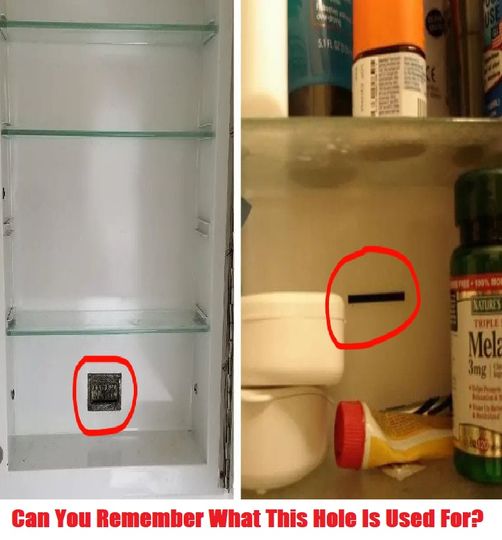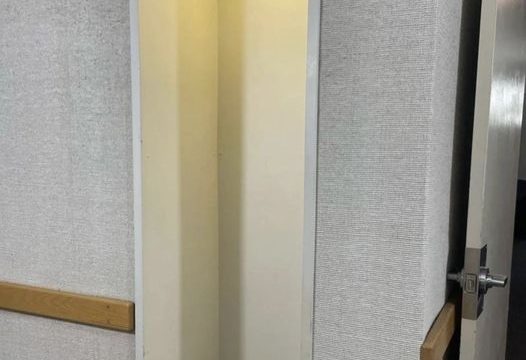Over the years, my husband and I have flipped quite a few houses, and let me tell you — we’ve discovered some pretty wild things hidden behind old walls and under dusty floors. You never know what surprises a century-old home might hold! Some of our most memorable finds include wads of old currency tucked away inside walls, with some bills actually turning out to be quite valuable today. And then there was that time we found hundreds of vintage glass bottles buried beneath the floorboards, likely dating back to the Prohibition era. But today, I want to share with you one peculiar feature we’ve come across in several old homes — something that might puzzle you if you’ve never seen it before.

If you’ve ever had the chance to explore a really old house — we’re talking about homes built over a century ago — you might have noticed something curious in the bathroom. Many of these homes still have their original medicine cabinets mounted on the walls. And if you look closely at the back of these cabinets, you might spot a small, narrow slit cut into the back wall. It’s a subtle feature, easy to overlook, but if you’ve ever noticed it, you might have wondered: What on earth was that for?
The answer takes us back to a time long before modern razor blades became commonplace. Back in the day, before stainless steel razor blades were introduced in the 1960s, men used old-school metal razor blades to shave. These blades weren’t nearly as durable as the ones we use today — you were lucky if you could get more than a couple of shaves out of one before it dulled and needed to be replaced.
Now, here’s where things get interesting. In those days, tossing used razor blades into the trash was considered dangerous. It was an era before disposable razors and blade safety containers. Throwing a sharp blade into the garbage was a risky move; there was always the chance that someone could get cut, especially if a child or pet came into contact with it. To solve this problem, homes had a clever little solution: that mysterious slit in the medicine cabinet.
Instead of throwing away used blades where they could cause harm, men would slide the dull blades through the slot in the back of the cabinet. The blade would disappear into the wall, dropping into the empty space between the studs. Out of sight, out of mind, and — most importantly — safely away from anyone who might accidentally get hurt.
This disposal method was actually quite ingenious for its time. It kept sharp objects out of the trash and out of reach of curious children, pets, or anyone rummaging through the garbage. The blades would simply accumulate in the wall cavity over the years, with homeowners none the wiser. And since there was no way to retrieve them once they were dropped in, the wall acted as a kind of permanent razor blade tomb.
Fast forward to today, and this disposal method seems almost absurd. But back then, it made perfect sense. Imagine living in a time when safety disposal systems weren’t available, and households had to come up with their own solutions to everyday problems. Dropping the blades into the wall was a simple fix that kept everyone safe. However, it did come with one quirky downside that only became apparent decades later.
If you’ve ever been involved in renovating a home built before the 1960s, you might have had the odd experience of opening up a wall, only to find a pile of rusted, ancient razor blades just sitting there. The first time my husband and I encountered this, we were completely baffled. Why were there so many blades hidden behind the wall? It wasn’t until we did some research that we realized this was a common practice back in the day.
It’s funny to think about how something that was once considered practical is now a long-forgotten relic. Nowadays, we have designated containers for sharp objects, recycling programs, and all sorts of disposal methods that keep dangerous items out of harm’s way. But back then, homeowners had to get creative with what they had, and the solution they came up with was surprisingly effective.
So, if you ever find yourself exploring an old home or renovating a vintage property, take a moment to check the back of the medicine cabinet. If you see that little slit, you’ll know exactly what it was for. It’s a small but fascinating reminder of how people in the past solved everyday problems with the resources they had available. It’s these kinds of discoveries that make working on old homes so interesting. Every little detail tells a story about how people used to live and adapt to the challenges of their time.
Who knows? Maybe one day, the things we do now — things that seem perfectly normal and practical — will leave future generations scratching their heads in wonder. That’s the beauty of history. It has a way of turning the ordinary into something extraordinary with the passage of time.





